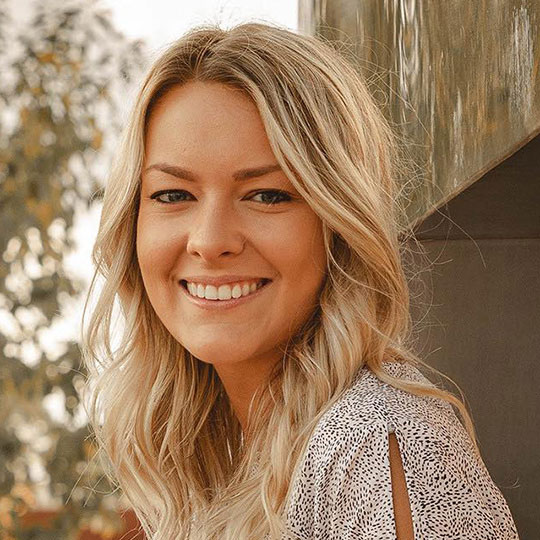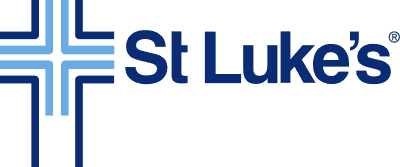St. Luke's surgeon's unique procedure brings hope to patients with chronic upper body pain

St. Luke's Center for Orthopedics & Sports Medicine in Boise is where Dr. Ketan Sharma performs the state of the art procedure.
By Taylor Marschner, News and Community
July 18, 2025
Suffering with chronic pain can affect almost every aspect of a person’s life – from spending time with family and friends, getting quality sleep, to holding a steady job. When treatment attempts bring minimal or no relief, patients can often feel desperate and unheard.
An innovative and recently applied surgical procedure called pectoralis minor tenotomy is being performed at St. Luke’s Center for Orthopedics and Sports Medicine, offering hope and helping patients with longstanding chronic pain of the shoulder, upper back, neck or arm. It is one of the only places in the country where the procedure is offered.

“I have patients come to me feeling frustrated and misdiagnosed with conditions like fibromyalgia, complex regional pain syndrome or thoracic outlet syndrome,” said Dr. Ketan Sharma, the St. Luke’s surgeon at the heart of the unique procedure. “Despite being treated by a range of specialists, many of them still suffer from debilitating pain with no clear explanation or path forward.”
Dr. Sharma and colleague Dr. James Friedman, a California-based orthopedic surgeon, determined that the pectoralis minor muscle, a small, but crucial muscle located in the front of the chest, was often the hidden culprit. Through performing a tenotomy or “release” on this muscle, patients, many who had previously felt their pain was inexplicable, are experiencing life-changing relief.
The procedure has historically been used to treat pectoralis minor syndrome, a different and rare diagnosis, but this brief, well-tolerated surgery now has proven results for certain chronic pain.
Dr. Sharma has been performing the procedure for a year and has already seen great results for his patients.
“Seeing patients regain their strength, ease their pain and live their lives again is incredibly rewarding. I’m excited to see this procedure take off and help more patients,” he said.
In April 2022, Boise resident Hayden Rhodes suffered a severe injury while working.
“I was installing solar panels for work, while on a roof, my safety equipment failed and I fell 24 feet onto my shoulder resulting in multiple fractures of my humerus,” Rhodes said.

“I was still in severe pain for another eight months before I had another procedure aimed at treating my carpal tunnel, followed by another structural repair of my shoulder,” he said.
Despite these procedures, Hayden was still in pain two years after the accident. Desperate for answers, he visited his primary care physician who recommended he visit Dr. Sharma, who works with people suffering with nerve damage. It changed everything.
“When I first visited Dr. Sharma, he immediately knew what was going on with my shoulder, why I was still in so much pain and exactly how he was going to treat it,” Rhodes said, adding that Dr. Sharma’s confidence in his care plan was a huge relief and helped make his recovery smooth. “From the scheduler to his nursing staff, all of the employees were kind, attentive and passionate.”
Rhodes had three procedures with Dr. Sharma and felt immediate improvements after each.
"It’s a weird sensation to have your nerves functioning again after them being impeded for so long,” he said. “It’s been pretty cool to have had such a dramatic difference so quickly."

“I wish I had connected with Dr. Sharma earlier,” Rhodes said. “He was the gamechanger in my recovery. I felt hopeless for so long, thinking I would be dealing with chronic pain for the rest of my life.”
Now, he’s regaining strength, in physical therapy, preparing to return to work, planning backpacking and camping trips again – which he hadn’t been able to do for almost three years. Dr. Sharma added that seeing patients like Rhodes regain their confidence and quality of life is truly fulfilling.
The release procedure is performed under general anesthetic. It takes only about 30 minutes, comprising a small, 2-centimeter incision in the shoulder. Most patients return home the same day. Recovery varies from person to person, but most often, patients take about four weeks to return to their normal activities.
Dr. Sharma notes the most ideal potential candidates for pectoralis minor tenotomy is anyone suffering with one or more of the following symptoms: headaches in the back of their scalp, upper back tightness, shoulder pain and weakness, and/or radiating numbness/tingling to their hands. Also, those who have been diagnosed with one of the following: thoracic outlet, subacromial impingement, cervical radiculopathy, cervicogenic headaches, myofascial pain, fibromyalgia, CRPS.
Dr. Sharma recommends those interested in learning more about the procedure have their primary care physician send a referral to his office or call his office directly at 208-706-4650. He has also published an article about this innovative procedure, available to read here. He also has a YouTube channel, Sharma Nerve and Pain, with talks he’s given about the procedure.
About The Author

Taylor Marschner is a St. Luke's public relations coordinator.


